What Separates A Good Scientific Theory From A Bad One?


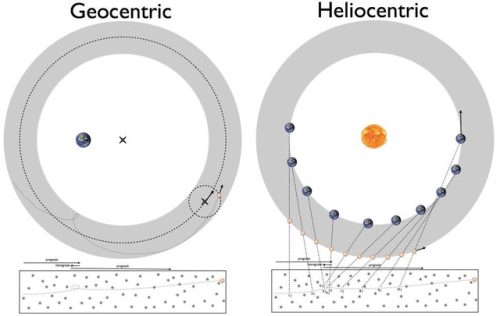






What Separates A Good Scientific Theory From A Bad One?
“It’s why an idea like dark matter is so powerful. By adding just a single new species of particle — something that’s cold, collisionless, and transparent to light and normal matter — you can explain everything from rotating galaxies to the cosmic web, the fluctuations in the microwave background, galaxy correlations, colliding galaxy clusters, and much, much more. It’s why ideas with a huge number of free parameters that must be tuned to get the right results are less satisfying and less predictively powerful. If we can model dark energy, for instance, with just one constant, why would we invent multi-field models with many parameters that are no more successful?”
You’ve often heard, when discussing competing scientific ideas, of appealing to Occam’s razor. Often paraphrased as “all things being equal, the simplest explanation is usually best,” it seems to open the door for people to argue over which explanation is simplest. This should not, however, be a point of contention: the explanation that’s simplest is the one that introduces the fewest number of new, additional free parameters. And when it comes to all things being equal, the things in question ought to be the number of new phenomena the novel idea can explain, along with the number of discernible predictions as compared with the old, prevailing idea. The best scientific ideas are the ones that explain the most by adding the least, while the worst ones unnecessarily add additional parameters on top of what we observe for no good reason other than personal bias. Ideas may be a dime-a-dozen, but a good idea is hard to find.
The next time you encounter an interesting, wild idea that someone throws out there, use this criteria to evaluate it. You just might be surprised at how quickly you can tell whether an idea is good or bad!
More Posts from Sergioballester-blog and Others
The first palaeontologist on Mars

(Image: Artist’s impression of NASA’s Perseverance rover on Mars)
Today NASA’s Perseverance rover landed on Mars. I don’t usually talk astronomy on this blog, but this time it’s relevant because—as you might have read—Perseverance is more or less the first palaeontologist on Mars!
Let me explain.

(Image: Satellite topography map of Jezero Crater, the site where Perseverance landed)
The site where Perseverance is landing, Jezero Crater, is a meteor impact crater near Mars’s Equator (say that 10 times fast!). It has evidence of a delta—the geomorphic feature that occurs when running water enters a large body of water. Orbital analyses also suggest it’s filled with carbonate rock—the kind that tend to deposit at the bottom of bodies of water.
Jezero Crater is not filled with water today. But the evidence strongly suggests it once was. If we’re going to find evidence of life on Mars, this is a good place to start looking.
Microbial fossils
When you think of fossils, most people think of giant T. rex skeletons, or frozen woolly mammoths, or neanderthal skulls. Maybe you’ve been around the block a bit, and you think about corals, or plant fossils, or tiny fossil shells. But some of the most common and important fossils on Earth are even tinier. Microbial fossils are commonly made by bacteria, archaea, and the like.

(Image: A cross-section of a stromatolite fossil, showing the multiple layers)
Some of the earliest fossils on earth are called stromatolites. They occur when bacterial colonies grow together in a mat—then, over time, sediment deposits over the colony, and the bacteria form another layer on top of the previous layer. Over time, many layers can be formed.

(Image: Helium Ion Microscopy image of iron oxide filaments formed by bacteria)
Although we breathe in oxygen and breathe out carbon dioxide, many microbes are not quite so restricted, and can breathe anything from sulphur to iron to methane or ammonia. When they do this, they often leave behind solid waste products, such as the above iron oxide filaments, that give away their presence. We can tell these apart from normal minerals in a number of ways, including by the relative proportions of different isotopes in them.

(Image: Schematic digram showing how molecular fossils form and are studied)
However, some of the most important fossils are molecular fossils. Living organisms produce a variety of different organic molecules; even long after the bodies of these organisms decay, those molecules can stay behind in an altered form for millions or even billions of years. If we’re looking for evidence of life on Mars, this might be our best bet.
Enter Perseverance

(Image: Diagram of Perseverance rover showing different instruments)
The Perseverance rover is overall similar in design to the Curiosity rover that landed in 2012, but there are some key differences—and most relevant here is that it’s a geological powerhouse. It’s got a number of instruments designed to carry out detailed geologic investigations:
RIMFAX is a ground-penetrating Radar unit. Like normal Radar, it works by sending radio waves into the ground; different materials affect the radio waves differently, as do transitions between different materials. This will allow us to, for the first time, study the geology of Mars below the surface to get an idea of what has been going on down there.

(Image: This is the kind of result produced by ground-penetrating radar—a rough image of the stratigraphy below the surface.)
PIXL (Planetary Instrument for X-ray Lithochemistry) shoots x-rays at samples and examines how they fluoresce in reaction. This allows for the detection of the elemental composition of a sample—helping us better understand the geology of the area, and potentially detect signatures of life.
SuperCam is a multi-function laser spectrometer that uses four different spectroscopy methods to examine the composition of samples. They all work in similar ways—essentially, different molecules react to laser stimulation differently, and different amounts of energy are required to make different molecules vibrate. The way that these molecules react can help us identify their composition, and the hope is that this may allow us to detect molecular fossils (these methods allow us to detect molecular fossils on Earth!)
SHERLOC (Scanning Habitable Environments with Raman & Luminescence for Organics & Chemicals) is another spectroscopic instrument—this one, however, is more precise, and optimised for detecting trace biosignatures in samples. It works similar to the above, using an ultraviolet laser to scan a 7 × 7 mm zone for evidence of organic compounds.
In addition to studying samples in situ, Perseverance will package small samples and leave them behind on Mars. A planned future mission will collect these packaged samples and launch them into space, where an orbiter will collect them and—hopefully—return them to Earth. This would be the first time that samples have ever been recovered from Mars, and would go a long way in increasing our understanding of the Martian environment and geology.
There’s no way of knowing yet what Perseverance will find—but even the fact that a robot palaeontologist is on Mars is incredibly exciting. Here’s to many years of discovery!
This impressive storm captured by Geoff Green over West Australia in August 2018, gives you an idea of the huge frequency at which lightning happen in an extreme weather event
Instagram: wonders_of_the_cosmos


Space Shuttle launch. 🌎🚀
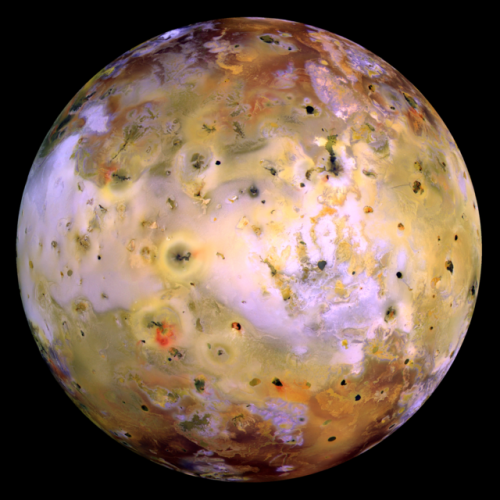
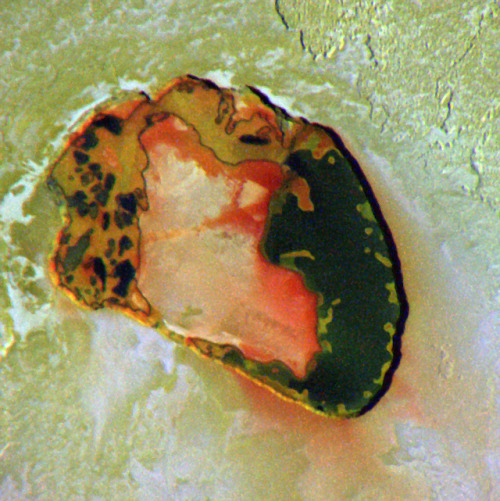
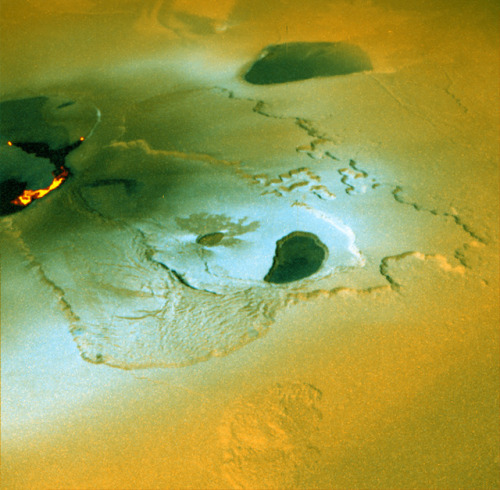
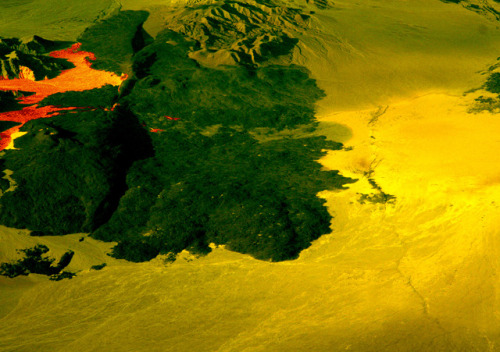
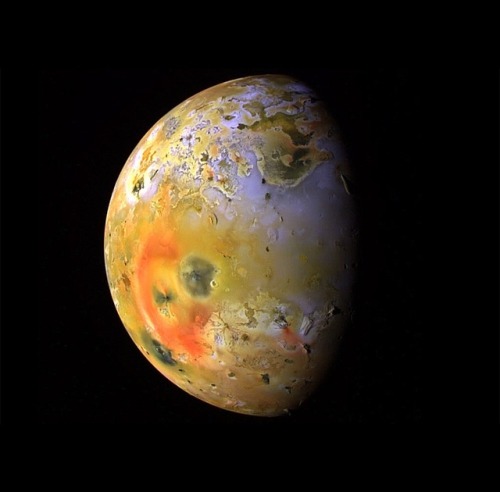
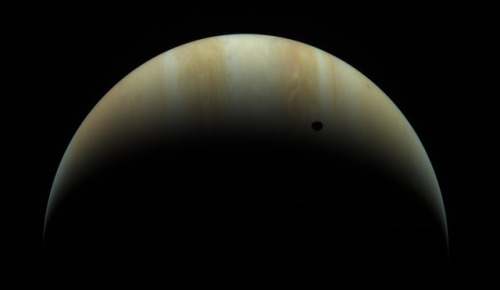
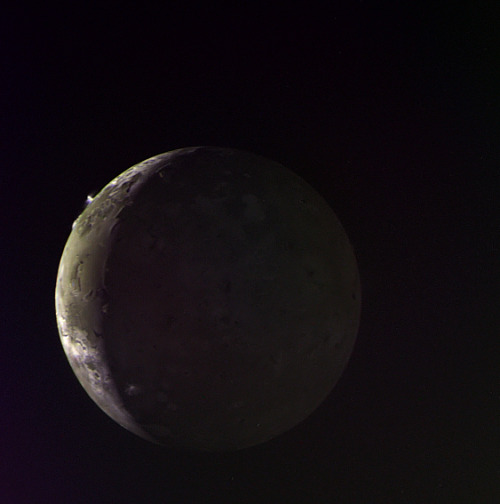
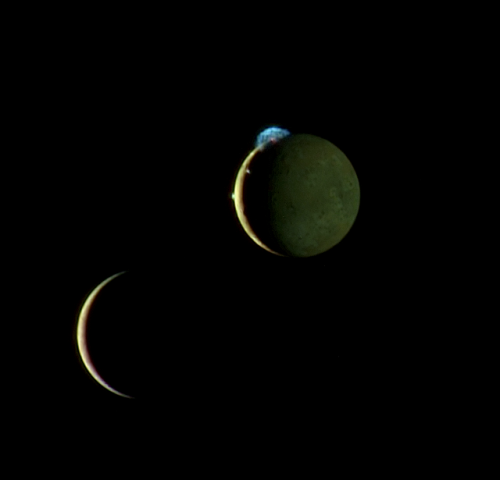
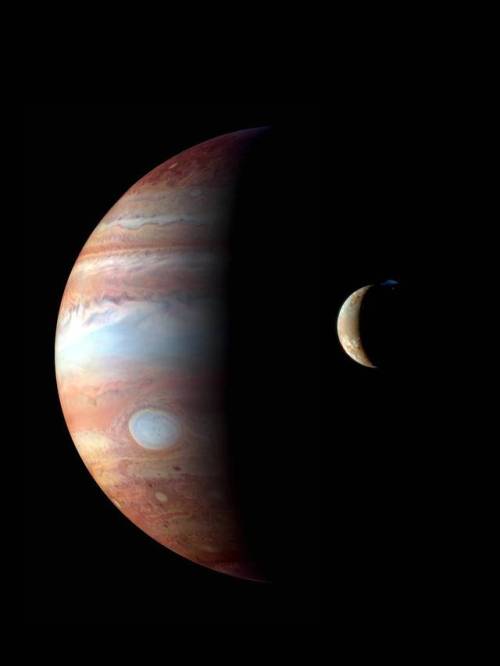
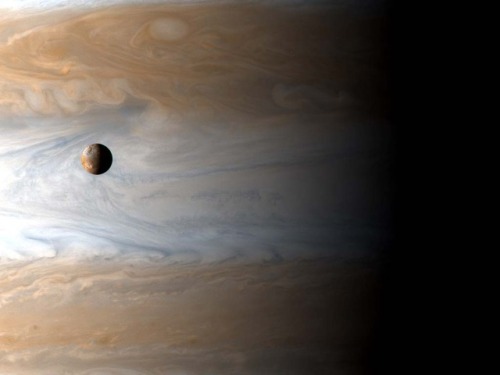
Io - The Volcanic Moon
Looking like a giant pizza covered with melted cheese and splotches of tomato and ripe olives, Io is the most volcanically active body in the solar system. Volcanic plumes rise 300 km (190 miles) above the surface, with material spewing out at nearly half the required escape velocity.
A bit larger than Earth’s Moon, Io is the third largest of Jupiter’s moons, and the fifth one in distance from the planet.
Although Io always points the same side toward Jupiter in its orbit around the giant planet, the large moons Europa and Ganymede perturb Io’s orbit into an irregularly elliptical one. Thus, in its widely varying distances from Jupiter, Io is subjected to tremendous tidal forces. These forces cause Io’s surface to bulge up and down (or in and out) by as much as 100 m (330 feet)! Compare these tides on Io’s solid surface to the tides on Earth’s oceans. On Earth, in the place where tides are highest, the difference between low and high tides is only 18 m (60 feet), and this is for water, not solid ground!
This tidal pumping generates a tremendous amount of heat within Io, keeping much of its subsurface crust in liquid form seeking any available escape route to the surface to relieve the pressure. Thus, the surface of Io is constantly renewing itself, filling in any impact craters with molten lava lakes and spreading smooth new floodplains of liquid rock. The composition of this material is not yet entirely clear, but theories suggest that it is largely molten sulfur and its compounds (which would account for the varigated coloring) or silicate rock (which would better account for the apparent temperatures, which may be too hot to be sulfur). Sulfur dioxide is the primary constituent of a thin atmosphere on Io. It has no water to speak of, unlike the other, colder Galilean moons. Data from the Galileo spacecraft indicates that an iron core may form Io’s center, thus giving Io its own magnetic field.
Io was discovered on 8 January 1610 by Galileo Galilei. The discovery, along with three other Jovian moons, was the first time a moon was discovered orbiting a planet other than Earth.

Eruption of the Tvashtar volcano on Jupiter’s moon Io, photographed by New Horizons.
Image credit: NASA/JPL/Galileo/New Horizons ( Stuart Rankin, Kevin Gill)
Source: NASA
Going the Distance... In Space
On April 17, NASA's New Horizons crossed a rare deep-space milestone – 50 astronomical units from the Sun, or 50 times farther from the Sun than Earth is. New Horizons is just the fifth spacecraft to reach this great distance, following the legendary Voyagers 1 and 2 and Pioneers 10 and 11. It’s almost 5 billion miles (7.5 billion kilometers) away; a remote region where a signal radioed from NASA's largest antennas on Earth, even traveling at the speed of light, needs seven hours to reach the far-flung spacecraft.
To celebrate reaching 50 AU, the New Horizons team compiled a list of 50 facts about the mission. Here are just a few of them; you'll find the full collection at: http://pluto.jhuapl.edu/News-Center/Fifty-Facts.php.

New Horizons is the first – and so far, only – spacecraft to visit Pluto. New Horizons sped through the Pluto system on July 14, 2015, providing a history-making close-up view of the dwarf planet and its family of five moons.
New Horizons is carrying some of the ashes of Pluto’s discoverer, Clyde Tombaugh. In 1930, the amateur astronomer spotted Pluto in a series of telescope images at Lowell Observatory in Arizona, making him the first American to discover a planet.
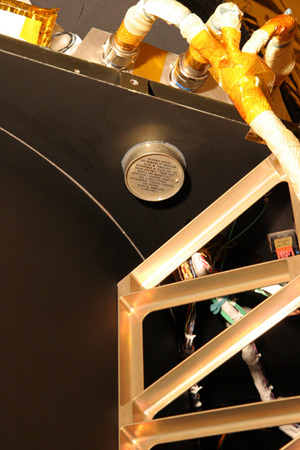
The “Pluto Not Yet Explored” U.S. stamp that New Horizons carries holds the Guinness World Record for the farthest traveled postage stamp. The stamp was part of a series created in 1991, when Pluto was the last unexplored planet in the solar system.

Dispatched at 36,400 miles per hour (58, 500 kilometers per hour) on January 19, 2006, New Horizons is still the fastest human-made object ever launched from Earth.
As the spacecraft flew by Jupiter’s moon Io, in February 2007, New Horizons captured the first detailed movie of a volcano erupting anywhere in the solar system except Earth.

New Horizons’ radioisotope thermoelectric generator (RTG) – its nuclear battery – will provide enough power to keep the spacecraft operating until the late-2030s.

Measurements of the universe’s darkness using New Horizons data found that the universe is twice as bright as predicted – a major extragalactic astronomy discovery!

New Horizons’ Venetia Burney Student Dust Counter is the first student-built instrument on any NASA planetary mission – and is providing unprecedented insight into the dust environment in the outer solar system.

New Horizons is so far away, that even the positons of the stars look different than what we see from Earth. This view of an "alien sky" allowed scientists to make stereo images of the nearest stars against the background of the galaxy.

Arrokoth – the official name the mission team proposed for the Kuiper Belt object New Horizons explored in January 2019 – is a Native American term that means “sky” in the Powhatan/Algonquin language.

Stay tuned in to the latest New Horizons updates on the mission website and follow NASA Solar System on Twitter and Facebook.
Make sure to follow us on Tumblr for your regular dose of space: http://nasa.tumblr.com.

Charon, moon of Pluto, observed by NASA’s New Horizons probe on this day in 2015.

Hubble Spies Spooky Shadow on Jupiter’s Giant Eye by NASA Goddard Photo and Video
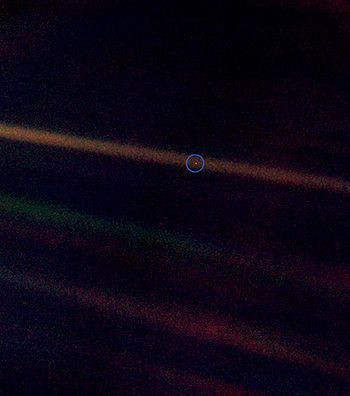
The Pale Blue Dot
The “Pale Blue Dot” is a photograph of planet Earth taken in 1990 by Voyager 1 from a record distance, showing it against the vastness of space.
By request of Carl Sagan, NASA commanded the Voyager 1 spacecraft, having completed its primary mission and now leaving the Solar System, to turn its camera around and to take a photograph of Earth across a great expanse of space. Reflecting on this picture (now considered one of the most important pictures in all of human history) Carl Sagan said:
“From this distant vantage point, the Earth might not seem of particular interest. But for us, it’s different. Consider again that dot. That’s here, that’s home, that’s us. On it everyone you love, everyone you know, everyone you ever heard of, every human being who ever was, lived out their lives. The aggregate of our joy and suffering, thousands of confident religions, ideologies, and economic doctrines, every hunter and forager, every hero and coward, every creator and destroyer of civilization, every king and peasant, every young couple in love, every mother and father, hopeful child, inventor and explorer, every teacher of morals, every corrupt politician, every “superstar,” every “supreme leader,” every saint and sinner in the history of our species lived there – on a mote of dust suspended in a sunbeam.
The Earth is a very small stage in a vast cosmic arena. Think of the rivers of blood spilled by all those generals and emperors so that, in glory and triumph, they could become the momentary masters of a fraction of a dot. Think of the endless cruelties visited by the inhabitants of one corner of this pixel on the scarcely distinguishable inhabitants of some other corner, how frequent their misunderstandings, how eager they are to kill one another, how fervent their hatreds.
Our posturings, our imagined self-importance, the delusion that we have some privileged position in the Universe, are challenged by this point of pale light. Our planet is a lonely speck in the enveloping cosmic dark. In our obscurity, in all this vastness, there is no hint that help will come from elsewhere to save us from ourselves.
The Earth is the only world known so far to harbor life. There is nowhere else, at least in the near future, to which our species could migrate. Visit, yes. Settle, not yet. Like it or not, for the moment the Earth is where we make our stand.
It has been said that astronomy is a humbling and character-building experience. There is perhaps no better demonstration of the folly of human conceits than this distant image of our tiny world. To me, it underscores our responsibility to deal more kindly with one another, and to preserve and cherish the pale blue dot, the only home we’ve ever known.”
![Voyager 1 Approaching Jupiter In 1979. [Reddit/spacegifs]](https://64.media.tumblr.com/57003d3715c75582218ee1b20aeb6a70/tumblr_p21webfuy81s04h2ho1_400.gif)
Voyager 1 approaching Jupiter in 1979. [Reddit/spacegifs]
-
 filippo-sangiorgio liked this · 2 years ago
filippo-sangiorgio liked this · 2 years ago -
 phdgurll liked this · 4 years ago
phdgurll liked this · 4 years ago -
 sergioballester-blog reblogged this · 4 years ago
sergioballester-blog reblogged this · 4 years ago -
 sergioballester-blog liked this · 4 years ago
sergioballester-blog liked this · 4 years ago -
 almamiaamaelcafe liked this · 6 years ago
almamiaamaelcafe liked this · 6 years ago -
 bestdeals-bz liked this · 6 years ago
bestdeals-bz liked this · 6 years ago -
 svnrae liked this · 6 years ago
svnrae liked this · 6 years ago -
 fullstudent201719-blog liked this · 7 years ago
fullstudent201719-blog liked this · 7 years ago -
 exeltro-blog liked this · 7 years ago
exeltro-blog liked this · 7 years ago -
 tylerwinter97-blog liked this · 7 years ago
tylerwinter97-blog liked this · 7 years ago -
 yesthejellyfishlineme liked this · 7 years ago
yesthejellyfishlineme liked this · 7 years ago -
 echoing-oceans liked this · 7 years ago
echoing-oceans liked this · 7 years ago -
 queerhistorymajor liked this · 7 years ago
queerhistorymajor liked this · 7 years ago -
 hotmalenurse2 liked this · 7 years ago
hotmalenurse2 liked this · 7 years ago -
 dietaide liked this · 7 years ago
dietaide liked this · 7 years ago -
 jeremylawson reblogged this · 7 years ago
jeremylawson reblogged this · 7 years ago -
 darkfastlight reblogged this · 7 years ago
darkfastlight reblogged this · 7 years ago -
 principiodeincertipumbre-blog liked this · 7 years ago
principiodeincertipumbre-blog liked this · 7 years ago -
 shedcowdistinguiboyanchor liked this · 7 years ago
shedcowdistinguiboyanchor liked this · 7 years ago -
 ketous liked this · 7 years ago
ketous liked this · 7 years ago -
 monster602-blog liked this · 7 years ago
monster602-blog liked this · 7 years ago -
 hrodbert65 liked this · 7 years ago
hrodbert65 liked this · 7 years ago -
 activelyseekingpositivity-blog reblogged this · 7 years ago
activelyseekingpositivity-blog reblogged this · 7 years ago -
 activelyseekingpositivity-blog liked this · 7 years ago
activelyseekingpositivity-blog liked this · 7 years ago -
 natural-phenomena reblogged this · 7 years ago
natural-phenomena reblogged this · 7 years ago -
 delightfullyglitterycloud liked this · 7 years ago
delightfullyglitterycloud liked this · 7 years ago -
 delightfulartnutritionskele-blog liked this · 7 years ago
delightfulartnutritionskele-blog liked this · 7 years ago -
 global-air-force-blog liked this · 7 years ago
global-air-force-blog liked this · 7 years ago -
 poporano liked this · 7 years ago
poporano liked this · 7 years ago -
 thatguy1866 liked this · 7 years ago
thatguy1866 liked this · 7 years ago -
 loony-paranoid-star liked this · 7 years ago
loony-paranoid-star liked this · 7 years ago -
 violetfox-fridey reblogged this · 7 years ago
violetfox-fridey reblogged this · 7 years ago